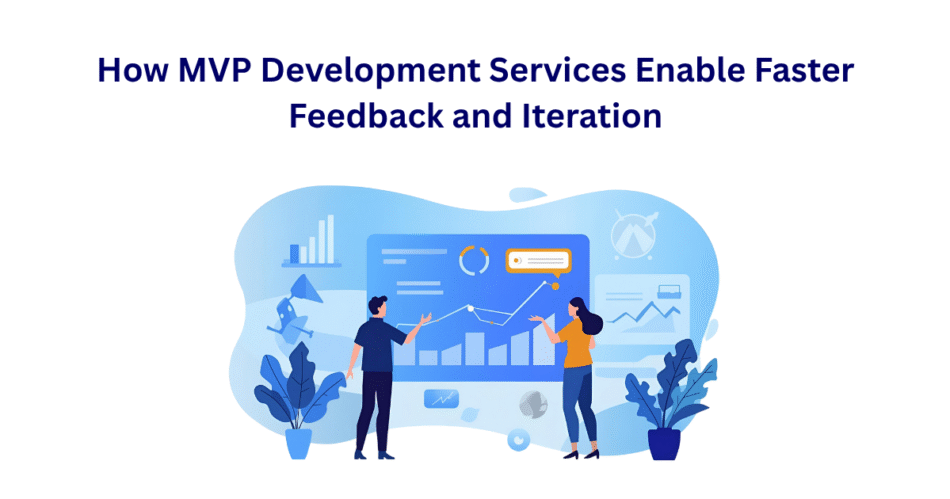In today’s highly competitive market, speed and adaptability determine a product’s success. Companies often face the challenge of balancing time-to-market, cost efficiency, and user satisfaction. Developing a fully-featured product from scratch without testing its viability can lead to costly failures.
MVP (Minimum Viable Product) development services address this problem by enabling businesses to release a simplified version of their product, collect real-time feedback, and iterate quickly. This approach transforms product development into a learning-driven process rather than a purely speculative one.
By leveraging MVP development services, businesses can validate ideas, understand user needs, and adapt their offerings efficiently — saving both time and money.
What is an MVP?
An MVP is a simplified version of a product that includes only the essential features needed to solve a core problem for early adopters. The goal is to validate the idea, learn from user behavior, and iterate based on insights.
Key characteristics of an MVP:
- Minimal functionality: Focus on solving the primary problem.
- Early release: Launched quickly to start the feedback loop.
- User-centric: Designed to gather actionable insights.
Why Startups and Enterprises Rely on MVPs
- Startups: Validate business ideas and attract early investors without heavy investment.
- Enterprises: Test new features or markets without disrupting existing products.
- All businesses: Reduce the risk of developing unwanted or unused features.
Stat: According to CB Insights, 42% of startups fail due to lack of market need. MVPs help mitigate this risk by validating demand before scaling.
MVP Development Services: An Overview
MVP development services are specialized offerings provided by technology firms or consultancies. They help businesses design, build, and deploy MVPs efficiently.
Core Offerings:
- Product Strategy and Requirement Analysis: Identifying core features and prioritizing functionality.
- UI/UX Design: Crafting a simple, intuitive design for early users.
- Rapid Development: Using modern frameworks and tools for fast delivery.
- Analytics Integration: Tracking user engagement, retention, and behavior.
- Iterative Updates: Quickly implementing changes based on feedback.
Role in Modern Product Development
MVP development services act as accelerators for innovation. By releasing a functional product quickly, businesses can:
- Test assumptions about their target audience
- Identify pain points and usability issues
- Adjust business models or features before full-scale investment
How MVPs Accelerate Feedback
1. Early User Engagement
An MVP allows businesses to engage with real users immediately. Early adoption helps identify what users value most and reveals usability or feature gaps that were not apparent during internal testing.
Example: Instagram initially launched as “Burbn,” a location-based check-in app. Through MVP testing, the team discovered that users loved photo-sharing features, prompting them to pivot.
2. Data-Driven Decision Making
MVPs integrate analytics tools that provide actionable insights. Metrics like feature usage, time spent, retention, and drop-off points allow teams to make informed decisions rather than relying on assumptions.
Stat: According to Statista, companies that iterate based on user analytics are 1.5x more likely to achieve product-market fit.
3. Reducing Development Risks
By testing the market with a minimal investment, MVPs minimize financial and operational risks. Teams can avoid building unnecessary features, saving time, resources, and potential losses.
Iteration Through MVP Development
Agile and Lean Methodologies
MVP development aligns with Agile and Lean principles:
- Agile: Promotes short, incremental development cycles and continuous improvement.
- Lean Startup: Encourages learning through validated experiments rather than extensive upfront planning.
Continuous Improvement Cycles
Iteration involves collecting feedback, implementing changes, and releasing updates. Effective strategies include:
- User-Centric Updates: Prioritize changes based on what drives engagement.
- A/B Testing: Compare variations to optimize functionality and design.
- Rapid Prototyping: Test new features quickly before full-scale development.
Real-World Case Studies
- Airbnb: Began with a simple MVP website to test user interest in renting out spaces. Iterations based on feedback led to the full-fledged platform used today.
- Dropbox: Released an MVP video explaining the product concept, validating market demand before building the actual platform.
Key Benefits of MVP Development Services
1. Faster Time-to-Market
MVPs allow businesses to launch quickly and capture early users before competitors.
2. Cost Efficiency and Resource Optimization
Focusing on essential features reduces development costs while ensuring maximum learning.
3. Improved Product-Market Fit
Iterative feedback ensures the product evolves in alignment with actual user needs.
4. Investor Readiness
A validated MVP with real user data improves credibility, attracting investors and funding opportunities.
Choosing the Right MVP Development Service Provider
When selecting a provider, consider:
- Experience and Technical Capabilities: Look for a track record of successful MVP launches in your industry.
- Transparent Processes and Communication: Clear milestones and reporting ensure alignment.
- Post-MVP Support: Providers should offer support for iterations, scaling, and analytics integration.
Challenges and Solutions in MVP Development
- Scope Creep: Avoid adding non-essential features to maintain focus.
- Feedback Overload: Prioritize actionable insights aligned with business goals.
- Technical Debt: Build scalable foundations even for MVPs to prevent future rework.
Conclusion
MVP development services are essential for reducing risks, saving costs, and enabling rapid iteration. By allowing businesses to gather feedback early, refine features continuously, and align products with real market needs, MVPs increase the likelihood of success.
Whether you are a startup testing a new idea or an enterprise experimenting with innovation, investing in professional MVP development services is a strategic decision that accelerates growth and ensures smarter product development.
FAQs
Q1: How long does it take to develop an MVP?
Typically 4–12 weeks depending on complexity and features.
Q2: Can an MVP attract investors?
Yes. A functional MVP with validated market interest can significantly improve investor confidence.
Q3: What features should be included in an MVP?
Only core features that solve the primary user problem.
Q4: How often should I iterate on my MVP?
Iteration should be continuous, based on user behavior and analytics.
Q5: Can MVP development services benefit both startups and enterprises?
Absolutely. Startups validate ideas while enterprises test new innovations without disrupting existing operations.







